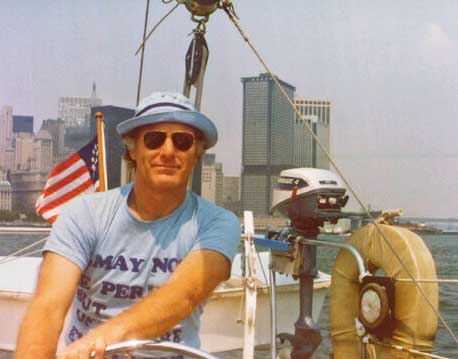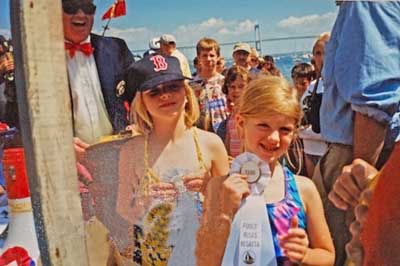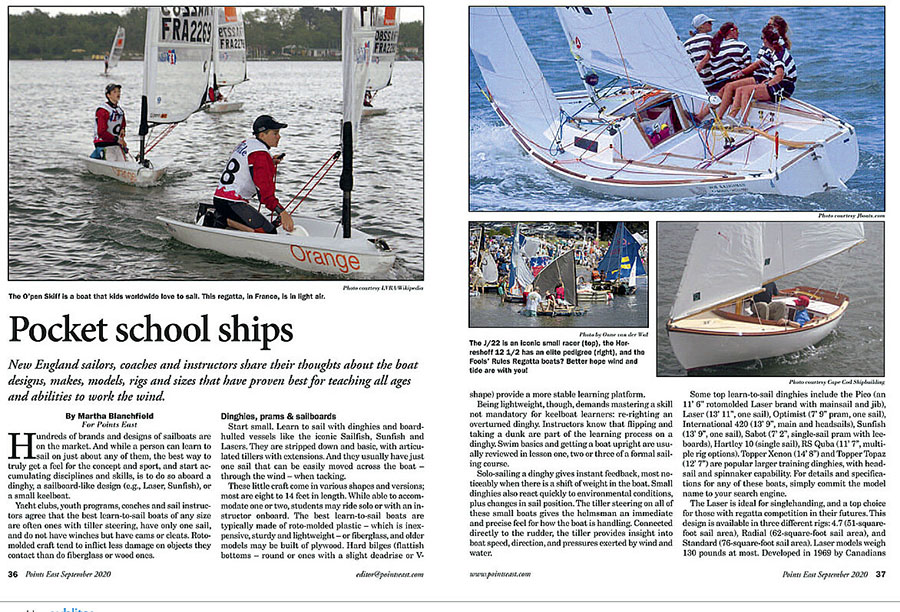Read about Best Learn to Sail Boats here, and appearing in Points East, September 2020 (page 37: “Pocket school ships”)There are hundreds of brands and makes of sailboats. And while a person can learn to sail on just about any model, many say the best way to truly get a feel for the sport and start building skills is to do so aboard a dinghy or small keelboat. The best learn to sail boats that yacht clubs, youth programs and sail instructors like often are:
- Boats with tiller steering
- Boats that have only one sail
- Boats that do not have winches (cams or cleats and only one sail)
- Rotomolded vessels (which tend to inflict less damage on objects they contact)
- Sailing dinghy and skiff-types
- Small sloops and keelboats
the best way to truly get a feel for the sport and start building skills is to do so aboard a dinghy or small keelboat
Start Small: Dinghies, Skiffs, Sloops As Best Learn to Sail Boats
Best learn to sail dinghies and skiffs are stripped down and basic, sport tiller steering and have just one sail that can be easily moved left-side to right-side. Vessels come in various shapes and versions; most are eight to 10-feet in length. Able to accommodate one or two, students may ride solo or with an instructor onboard. Best learn to sail boats are typically made of plastic, which is inexpensive, sturdy and lightweight.
That condition of being lightweight, though, introduces the importance of mastering a skill not mandatory for keelboat learners: the skill to re-right an overturned dinghy. Instructors know that flipping and taking a dunk are part of the learning process on a skiff—swim basics and uprighting a vessel are reviewed in lesson one, two or three. Solo sailing a dinghy gives instant feedback, most noticeably when there is a shift of weight on the boat. Small skiffs also react quickly to environmental conditions, plus changes in sail position.
Tiller steering gives the helmsman an immediate and precise feel for how the boat is handling. Connected directly to the rudder, the tiller provides insight on boat speed, direction and pressure exerted by wind and water.
Some top learn to sail dinghy types include the Pico (Laser brand), Laser, Opti (Optimist), International 420 Dinghy, Sunfish, Sabot, Hartley 10, RS Quba. Topper Xenon and Topper Topaz are popular larger training dinghies; these models have a headsail and can carry a spinnaker.
For dinghy sailing enthusiasts, the Laser is an ideal for singlehanding, and a top choice for those seeking to eventually compete in regattas. This make is available in three different rigs–4.7 (51 square feet sail area), Radial (62 square feet sail area) and Standard (76 square feet sail area).
Laser boat models weigh 60 kilograms at most. Developed in 1969 by Canadians Bruce Kirby and Ian Brue, the Laser is oft-cited as a solid investment with decent resale value. A step up in learn to sail boats are sloops, some of which can accommodate four passengers. Versus dinghies and skiffs, sloops are configured to run a headsail plus mainsail. Cleats, not winches, are often present for securing the sails. Sloop boats may or may not have a keel.

Brewster Kahle’s father, Robert, on a lazy summer afternoon cruise. Brewster now pilots the family boat, a Luders 36.
Keelboats and More
Read about small boat J24 racing on San Francisco Bay
Among her various responsibilities with US Sailing, Betsy Alison is in charge of programs that assist adult learners. For some adults and/or individuals with mobility or other limitations, a keelboat is a more suitable learning platform: its ballasted keel gives stability and the boat tends to tip over less. Keelboats are often larger than dinghies and have a more open cockpit, so moving around onboard is easier.
Compared to a dinghy, the keelboat platform also permits instructors to direct additional onboard skills training–such as sail reefing, heaving to, crew overboard, teamwork, plus rotation through stations.
More stable center-board dinghies and keelboats prevalent throughout New England include the Rhodes 19, Ideal 18, Sonar, Cape Cod Mercury and smaller fleets of Cape Cod Knockabouts can still be found. Alison references Community Boating in Boston where, “Students can take lessons on a Mercury, then progress to sail Ideal 18s on the Charles River.”
She adds that the non-profit operation Courageous Sailing Center, operating in Boston Harbor, uses Rhodes 19s and J/80s which permit an instructor to sit onboard aside two, three or even four students, making them a top candidate as best learn to sail boats.
Meg Myles is Executive Director of the Conanicut Island Sailing Foundation of Jamestown, a venue that has been relying on Hobie Wave catamarans, but added O’pen Skiffs to programming this year. A top attraction is the free Wednesday night community boating onboard the catamarans. Citing, ‘No prior experience needed to join. Instructor on each boat,’ during summer 2019, approximately 270 guests took advantage of the offer.
Sailing builds character and leads to great things. Today, Erica Lush serves as a boat captain aboard 12 Metre yachts in the America’s Cup Charters fleet, Newport, RI. This native of Jamestown states that her over-the-water introduction began while an infant on her parents’ C&C 29.
Mother and father did a good job introducing their offspring to sailing because Lush recalls the many times she and her brother paired up on a favorite small boat with hull suitable for either rowing or sailing. “It was quite wide for its length, only one sail, plus a tiller,” she says. “There was a board you would sit on if you were rowing. The board had a hole in the middle to support the mast, and hardware at the hull anchored it into place. My brother would always steer since he was older. I would trim.”
She says that her parents would tie a long line to the bow. “If we got stuck in irons they could pull us in to the beach. They must have instructed us to only tack so that we wouldn’t wrap the rudder on the bowline.”
I remember crying at sailing camp when I first had to do the capsize drill in a pram. It terrified me!
Last year, Lush joined The Maiden Factor as permanent crew. Even while crossing the Indian Ocean—witnessing mighty extreme conditions—she felt confident. “With faith in my own capabilities and those of my teammates, I never felt nervous about our well-being.” Having directed training sessions, she smiles when recounting one instance when fear did sidle up aside sailing. “I remember crying at sailing camp when I first had to do the capsize drill in a pram. It terrified me!
The boat was rigged up and tied to the dock with a long bow line. We had to hold onto the mast and lean way out until the boat flipped over. Once in the water, we had to swim around to the centerboard, pull downward to bring the boat upright, climb in without flipping it over the other direction, then bail out the water.”
She had so much trouble trying to tip the boat that her instructor had to climb in and assist. “I stared into her eyes with utter terror.” After several more attempts she began to relax. Starting at age seven, Lush began building a reservoir of wonderful memories of her time spent in prams—likely why she brings so much empathy when helping learn to sail students.

Young girls and best learn to sail boats that they build themselves
